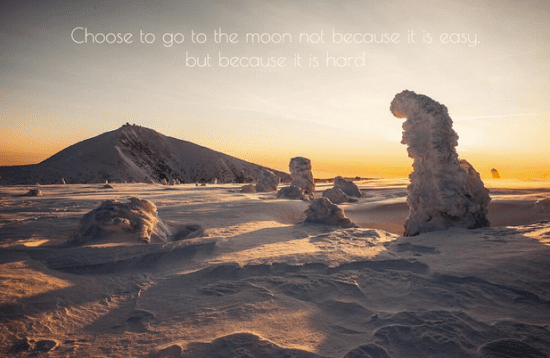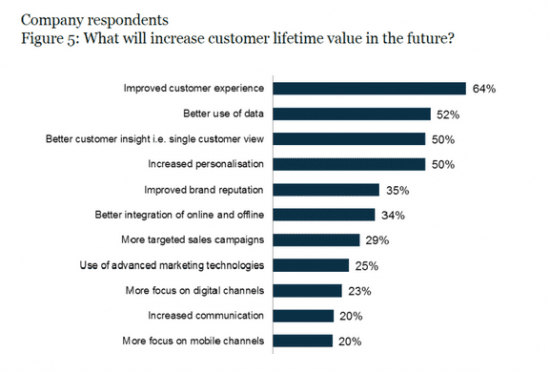Using customer insight to improve product/market fit?
Building a brand from scratch...
I have worked on over 20 branding projects – from start-ups to government institutions.
And in every case, we needed to know the environment of the brand, the shareholders, the stakeholders, the key influencers and key beneficiaries. I needed to know who will be affected by change and what change in selected part of environment I want to achieve.
With brand building at the beginning - there is nothing.
I have a piece of paper and a pen.
For past couple of years I strived to work in 3 steps.
- Target (aim of the action)
- Tool (defining and choosing the best tool)
- Action (don't think - act)
So if my aim is to:
- Achieve product/market fit with my brand I have to:
- Know my product and know the target market
- and then implement that knowledge.
So everything starts with blank piece of paper on which we have to organize the knowledge that we have and accompaniment it with the customer, stakeholder and every other possible insight that we have.
Insight – I think this is the most important part in marketing.
After Britannica -
Insight occurs when people recognise relationships or make associations between objects and action that can help them solve new problems.
Steve Jobs once said:
Creativity is just connecting things. When you ask creative people how they did something, they feel a little guilty because they didn't really do it. They just saw something. It seemed obvious to them after a while.
And that is exactly insight. Insight is something that resides deep inside us. This is something that we can agree on. It is less rational and more emotional.
When we worked on creating a brand we always wanted to bring out most important values that are already cultivated in the company. This one is tricky and you cannot achieve it without “going out of the building”. The interviews are crucial. You have to talk to customers and what is even more important you have to talk to employees of the company you are working for.
Board members always tend to say how whole company is aligned with the mission, how every employee knows what vision stands behind every manufactured product.
That is not true, I’m afraid.
And it is ok.
When you create a corporate brand – some aspects of the brand are for the company's board, some are for the employees, other for shareholders and other for customers.
Brand building is simple and same time it is hard. But always you have to start with insight.

Step by step insight building
To gather information you have to have a target which you want to achieve. To have that you need to:
- Ask people what they need
- Compare that with buying trends
- Add sales/marketing goals
How to get answers:
- Ask questions about the environment, workload, teamwork, ask questions about people you are interviewing, try to see what are theirs motivation
- Look beyond the obvious
- Don't be afraid to reframe the problem.
Great way to reframe the problem is to use the „kaleidoscopic thinking”. To get new results try asking yourself these kind of questions:
- How would someone who knows nothing about this problem or issue approach it?
- What do we know to be impossible, which if it were possible would create an authentic breakthrough?
- How would the world's best problem solving attack this issue?
- What is the one obstacle that, if surmounted, would create the greatest momentum for us in this issue?
- If we put absolutely no limitations on what's possible, what is the most outrageous solution to this problem?
- If we had to get this resolved in the next thirty minutes, how would we do it?
Key to finding and processing insights is empathy.
If you know who they are, with whom they do the action, what do they do, what they think or feel, why they do it - then you are on good track to have your customer insight.
Steve Jobs used to say:
You can't just ask customer what they want and then try to give that to them. By the time you get it built, they'll want something new.
Insight is something that lasts. The competitive edge of products or services you will find in market benchmarking - the insight gives us answer to your customers fundamental needs. So how can we use that insight to achieve product/market fit?

How to optimise your Inbound Marketing using insights
For some time now PR established itself as a "must-have” in every modern company.
Bill Gates:
“If I was down to my last dollar, I would spend it on public relations”.
He is a smart man so why did he say that?
Well that was the good, old days. With relatively small budget you could reach people in whole country. How was that possible? Couple years ago PRs advantage was scale. By paying the PR agency you could leverage the scale and trustworthiness of the newspapers and segment magazines. The press market was not divided into small fractions. You could go to biggest paper and everybody will know about your product.
Yep, that was something.
But times have changed. Now you can build scale by social brand endorsements and content marketing.That PR that he was talking about then is now called Inbound Marketing.
Now every segment has its own website and its blog. Every segment has its influencer and most important every segment has its medium.
The insight rose to even more significance. Now the true challenge is not telling your brand’s story but telling the customer’s story. Content without context is nothing.
To prepare your Viewer Personas you need to collect data.
Start monitoring keywords that you are interested in, define influencers who are interested in segment that you are operating.
To collect data use:
- Google Trends - to compare topics that are trending and those that are evergreens.
- Google Alerts - to monitor keywords in real-time
- Google Adwords - to find most popular keywords for your topics
Also use social monitoring tool .

Insight as the fundamental part of your product/service development strategy
In 2014 Econsultancy and Sitecore did this research about the customer needs (regarding Customer Lifetime Value):

See answer 1,2,3,4,7,9.
This is huge - especially with amplifying insight with marketing automation the worth of insight is immense. Insight is the most valuable tool in marketing for many years to come.
So how could we use the insights for better product/market fit?
At FoxyTasks we have to put two halfs of product/market fit together.
- “Secret / blue ocean” insight:
- We need an idea
- We need to collect information from people that we would like to sell the idea to,
- We need an MVP and ship it as fast as possible
- Data / user analytics insight.
- We need event/data/analytics powerhorse onboard
- At this point we cannot fake it till we make it but we have to tweak it till we meet it.
- When we use the analytic and interview insight into day to day development method our product we will be more engaged and new features would be more aligned with user needs.
Searching for product/market fit starts with the “secret”. “Secret” is the vision of the future product. When we start with the vision, we use insight to align the product to the market.
Here we also have to “get out of the building”. We have to make interviews, see how people interact with our product, and what is their motivation behind the engagement. We have to ask and observe.
I see a lot of similarities with finding the insight for product/market fit and with finding the insight for a new brand. The most important thing is just waiting to be discovered therefore the results we discover are almost obvious.
Insight is a consequence of a problem. So if you are dealing with a problem your insight is already waiting to be discovered.
Photo credits: https://www.flickr.com/photos/kamilghais/

Thanks to
Marek Szade for sharing their advice and opinions in this post. Marek Szade is Marek Szade is brand manager turned digital marketer turned growth hacker. You can follow him on
Twitter or connect on
LinkedIn.






 Thanks to
Thanks to 


